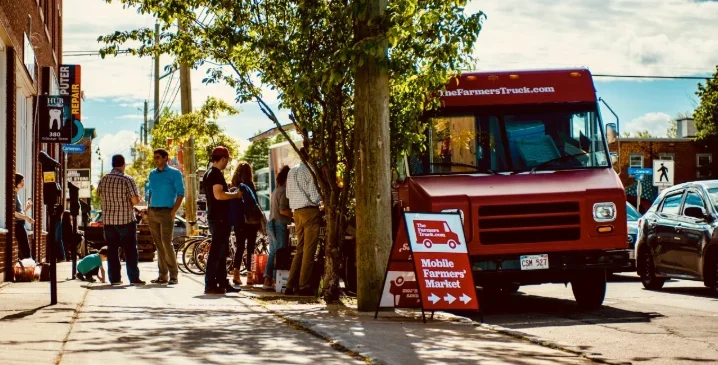If Food Is Medicine, How Do We Build a Medical-Grade Food System?
Here’s the reality: the food system we rely on wasn’t built with health in mind. It was built to prioritize efficiency, yield, and profit—at the expense of our well-being. But we can change that. If we focus on health outcomes, every step of the journey from farm to table could be reimagined, creating a system that feeds and heals communities.
Start with the Soil
A medical-grade system would prioritize regenerative agriculture, which rebuilds soil health and increases the nutritional density of crops. By incentivizing farmers to grow nutrient-dense fruits and vegetables instead of subsidizing commodity crops, we shift the foundation of our food system.
This change will rebuild soil health, reduce environmental damage, and ensure that the food we grow is packed with the nutrients our bodies need. It will also create more opportunities for small farms to thrive, connecting them directly to communities that value fresh, local food.
Protect Food’s Nutritional Integrity
From harvest to processing, food loses its value when it’s over-processed or shipped thousands of miles. We need infrastructure like local food hubs that prioritize flash freezing and cold storage, keeping food closer to its natural state and extending its shelf life.
This will drastically cut food waste, improve access to high-quality food year-round, and ensure that even the busiest families can enjoy fresh, healthy meals.
A medical-grade food system would move away from ultra-processed foods laden with additives and instead focus on preserving natural nutrients.
Bring Fresh Food to Every Neighborhood
Access is everything. And when I say access, I mean the 5 A's of Food Security.
Availability: Sufficient food for all people at all times.
Accessibility: Physical and economic access to food for all at all times.
Adequacy: Access to food that is nutritious and safe, and produced in environmentally sustainable ways.
Acceptability: Access to culturally acceptable food, which is produced and obtained in ways that do not compromise people’s dignity, self-respect or human rights.
Agency: The policies and processes that enable the achievement of food security.
Too many communities—especially in rural areas and food deserts—don’t have the grocery stores they need. Mobile markets can change that.
They bring farm-fresh produce directly to neighborhoods, creating a space where food is accessible, affordable, and inclusive.
Shift the Incentives
Right now, the system rewards what’s easy, cheap, and processed. We need to flip that. Governments and businesses should reward what’s fresh, local, and nutritious. By rethinking subsidies, taxing ultra-processed foods, and expanding programs like SNAP to make fresh produce more affordable, we can reshape what’s possible at the checkout counter.
This change will make fresh food the standard, not the exception. And mobile markets? They’ll be there, ensuring these incentives turn into tangible change for the communities that need it most.
Educate and Empower
Finally, we need to make food literacy a priority. Knowing where your food comes from, how to cook it, and how it impacts your health shouldn’t be a privilege—it should be a basic skill, taught in schools, clinics, and community centers.
Imagine parents learning to cook with fresh ingredients they just bought at a mobile market. Imagine kids growing up understanding that food isn’t just fuel—it’s medicine.
The ultimate goal of a medical-grade food system is to make healthy food accessible and desirable for everyone, without stigma.
Tools like the Fresh Connect have shown us how to meet emergency food needs while preserving dignity. This prepaid card allows individuals to purchase fresh food just like anyone else, at mobile markets or grocery stores, without the stigma often associated with food assistance.
By combining this with programs that accept EBT, WIC, and healthy food incentives, we create a system that is inclusive, sustainable, and built to last.
This Is How We Win
When we prioritize health in the food system, we don’t just improve diets—we transform lives. We create stronger local economies, healthier communities, and a future where good food is the norm, not the exception.
It reduces chronic illnesses, closes equity gaps, and even lowers healthcare costs by preventing diet-related diseases.
It creates vibrant local economies by supporting small farmers and food entrepreneurs. Most importantly, it gives every family, regardless of income, the chance to thrive.
Mobile markets are a big part of this vision. They’re nimble, adaptable, and personal. They show up where they’re needed, connect people to fresh food, and remind us that health starts with what’s on our plate.
How do you see food systems changing to better serve our communities?

